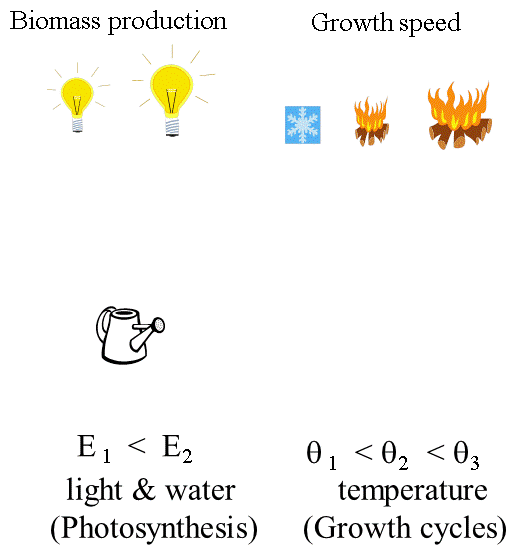Preliminary Course.
Eco-Physiology
Preliminary Notions. Factors affecting plant growth.
Plant growth results from both endogenous processes and environmental factors.
Environmental Factors
-
Environmental factors also impact plant growth.
-
Resources, and more precisely the water and light supply, affect organ biomass accumulation and thus organ size.
- Light produces photosynthates via green leaf functioning. Empirically, the effect of incident light is well known. According to the light intensity, a linear effect can be seen gradually reaching saturation. Light has also a strong influence on plant plasticity. It can modify plant development by affecting meristem production rules.
- Water is taken up by roots from the root environment and evaporates by transpiration at leaf level. As both transpiration and photosynthesis are strongly influenced by stomata aperture, often a close relationship is found between crop transpiration and biomass production. Plant transpiration depends primarily on radiation and leaf area. It can be limited by water shortages in the root environment (stomata will close). The cumulative effect of water transpiration over the long term is often linearly related to plant biomass production.
- Temperature also affects growth.
- In most plants, the structure development steps are governed by the thermal energy received.
Temperature controls the rate of shoot development and the duration of organ expansion. Within a certain temperature range (i.e., when the development rate is linearly related to temperature), there is a linear relationship between the number of phytomers formed on a shoot and the sum of daily effective temperatures received by the plant.

Environmental factors illustrating the growth dynamics with two levels of resources and three levels of temperature. (Drawing and animation P. de Reffye, CIRAD)
